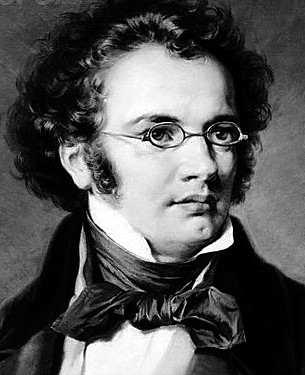March Militaire No.1
Buy this item (out of stock)
Product ID: GM1 CL213
By Franz Schubert
Publisher:
Goodmusic
Arranger:
2 Flutes (2nd db.Piccolo), 2 Oboes, 2 Clarinets in Bb, 2 Bassoons, 2 Horns in F, 2 Trumpets in Bb, 3 Trombones, TubaTimpani, Percussion (3 players: Triangle, Snare Drum, Bass Drum)Strings (Violin 1, Violin 2, Viola, Cello, Bass)
Series:
Goodmusic Concert Classics
Genre:
Classical
Line Up:
Symphony Orchestra (Solo: Unknown)
Duration:
5:30
Level: 3
Set & Score
This item is out of stock
About this item
Schubert's Trois Marches Militaires were written for piano duet when the composer was in his early twenties, while teaching music to the daughters of Count Johann Karl Esterhazy at his summer home in Zseliz, then in Hungary. The French title may have been to deflect the performers from assuming that the marches were Austro-Hungarian in nature and, maybe, to appeal to a more international clientele when they were published in 1826. In this regard they do not stand alone, as the composer gave French titles to a number of piano pieces, such as the Moments Musicaux. Sadly, Schubert only lived for another two years and never achieved recognition in France until after his death.
The three marches are in ternary form, with the march sections recapitulated after a central Trio. The first one, in D major, is by far the best known - even Stravinsky quotes it in his Circus Polka. In fact, all three marches are equally tuneful and memorable. The second march is shorter and triumphal in nature. The third is longer and has an endearing 'swagger', with a spectacular appearance of Schubert's characteristic German 6th chord in the thirty-second bar. The central Trio sections, in particular, are full of Viennese finesse and will bring a smile of delight to the listener with their unexpected harmonic twists. They are charming, almost balletic in nature and it is no surprise that Isadora Duncan saw the choreographic potential of the first piece in 1909.
Above all, they are immense fun to play and it is these endearing qualities which I have attempted to convey when orchestrating them.
Instrumentation
2 Flutes (2nd db.Piccolo), 2 Oboes, 2 Clarinets in Bb, 2 Bassoons, 2 Horns in F, 2 Trumpets in Bb, 3 Trombones, Tuba
Timpani, Percussion (3 players: Triangle, Snare Drum, Bass Drum)
Strings (Violin 1, Violin 2, Viola, Cello, Bass)
Reviews and rating
No review available, be the first to write one!

Composer
Franz Schubert (1797-1828)

Franz Peter Schubert (German pronunciation: [ˈfʁants ˈʃuːbɛɐ̯t]; 31 January 1797 – 19 November 1828) was an Austrian composer.
Although he died at an early age, Schubert was tremendously prolific. He wrote some 600 Lieder, nine symphonies (including the famous "Unfinished Symphony"), liturgical music, operas, some incidental music, and a large body of chamber and solo piano music. Appreciation of his music during his lifetime was limited, but interest in Schubert's work increased dramatically in the decades following his death at the age of 31. Franz Liszt, Robert Schumann, Johannes Brahms and Felix Mendelssohn, among others, discovered and championed his works in the 19th Century. Today, Schubert is admired as one of the leading exponents of the early Romantic era in music and he remains one of the most frequently performed composers.
More info about the composer...



 Click above to view samples
Click above to view samples
